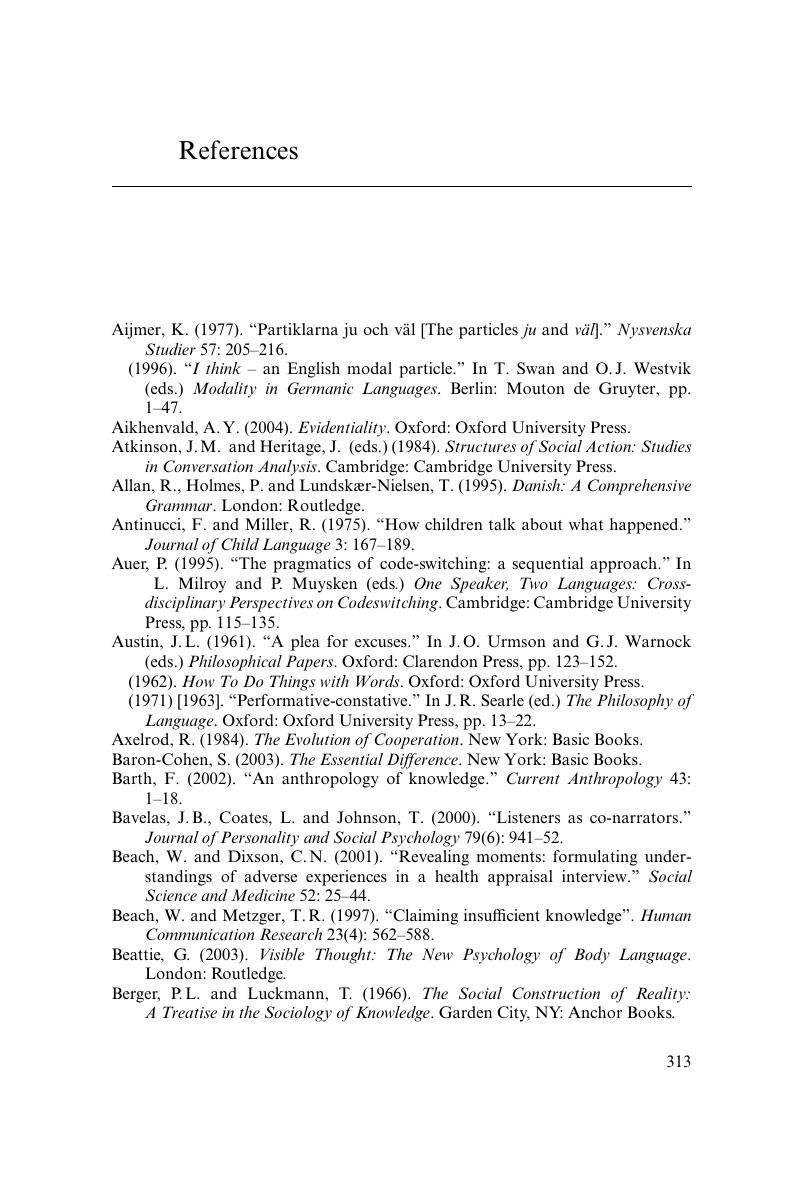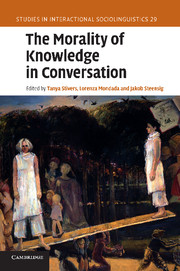Book contents
- Frontmatter
- Contents
- Contributors
- Preface
- Acknowledgements
- List of transcription and glossing symbols
- Part I Introduction
- Part II Affiliational consequences of managing epistemic asymmetries
- Part III Epistemic resources for managing affi liation and alignment
- Part IV Toward a framework
- References
- Index
- References
References
Published online by Cambridge University Press: 05 November 2011
- Frontmatter
- Contents
- Contributors
- Preface
- Acknowledgements
- List of transcription and glossing symbols
- Part I Introduction
- Part II Affiliational consequences of managing epistemic asymmetries
- Part III Epistemic resources for managing affi liation and alignment
- Part IV Toward a framework
- References
- Index
- References
Summary

Information
- Type
- Chapter
- Information
- The Morality of Knowledge in Conversation , pp. 313 - 332Publisher: Cambridge University PressPrint publication year: 2011
